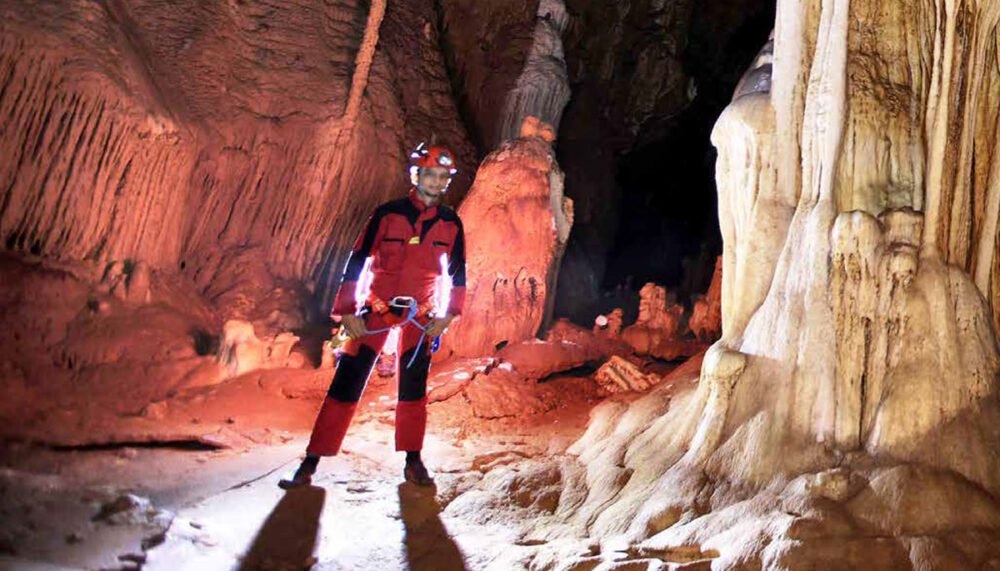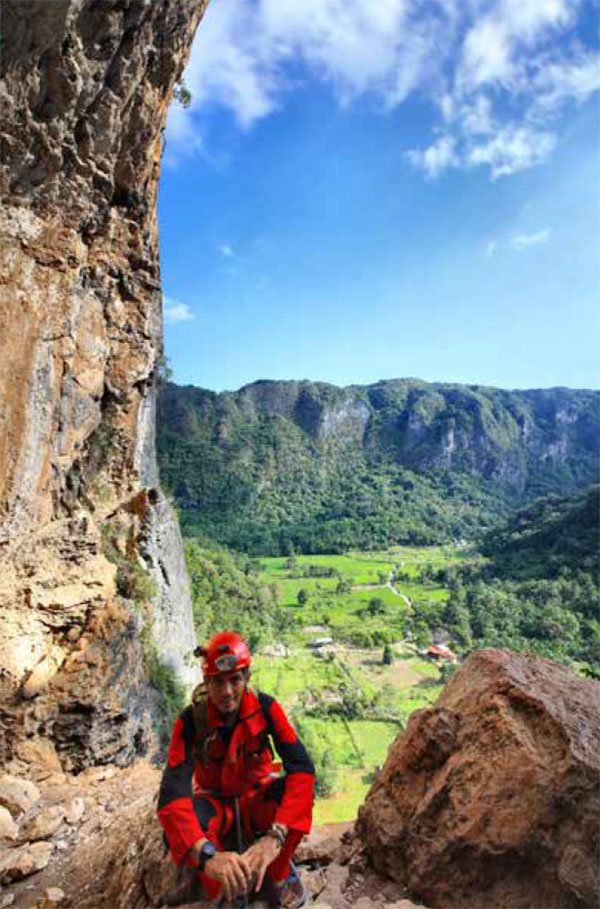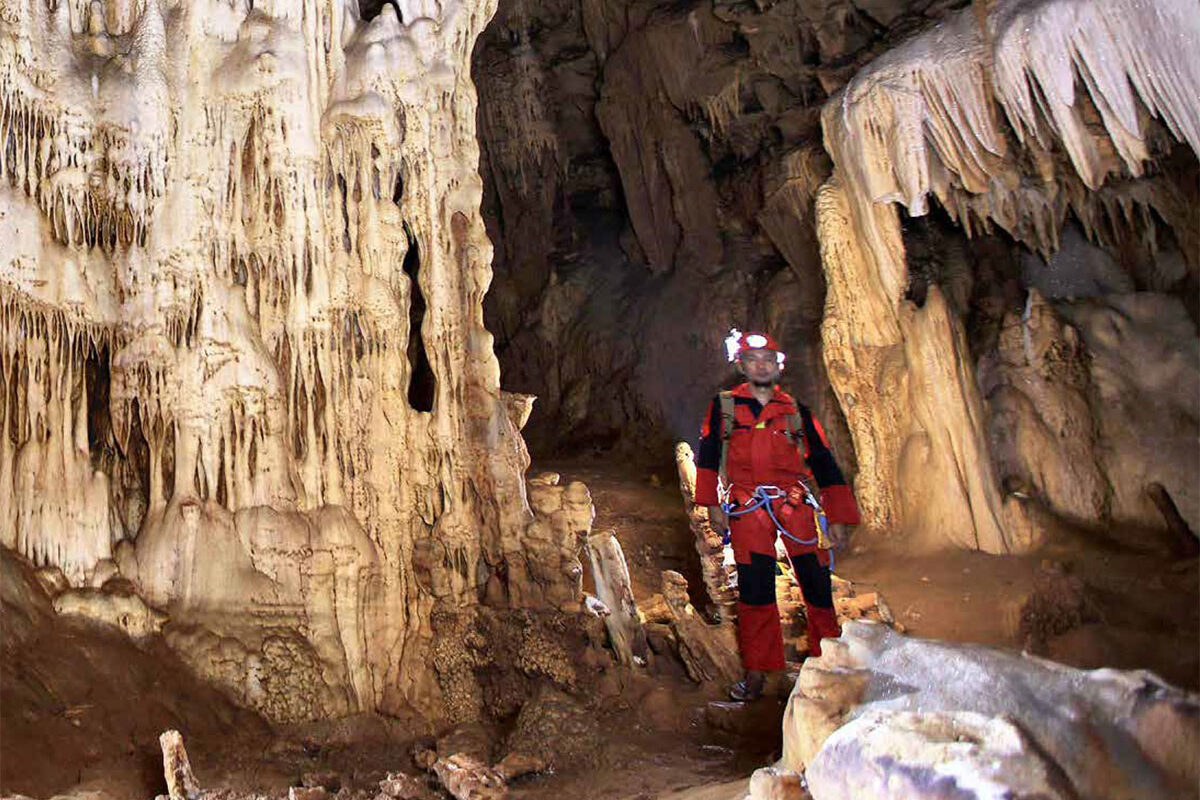The beauty charm of the Earth of Pangkep
Word: Ayu Arman
Not only a home for prehistoric caves of the world, Pangkep also has a cave that offers the beauty of the earth.
The cave is named Kalibong Alloa. Located in Belae Village, Te’ne Minasa Subdistrict, Kalibong Alloa offers a cave-guided tour that takes you to see the stunning Pangkep’s earth.
This cave is located on the steep cliffs of karst mountains included in the protected area of Bantimurung-Bulusaraung National Park.
In the local language, Kalibong means hole and Alo is the name of Celebes hornbills (Aceros Cassidix).
This cave is located in the middle of karst hills. Therefore, to get to the mouth of the cave we have to walk more or less an hour through uphill terrain. However, the weariness of the climb will be paid off by the panorama of amazing karst towers just before entering the cave’s mouth. Moreover, while in the cave, you will feel the sensation of the beauty of the earth.

As we descended to the bottom of the cave, we had already seen a wall full of stalagmites built by drops of water.
This cave has a length of 500 meters and a width of 20 meters. Being in this cave felt like we were in a cool room. The air was cool. Its rock formations rise from the ceiling to the base of the cave.
This cave has several complete ornaments, including dolines, stalactites, columns, crystal curtains, travertine terraces, gourdams, cave pearls, helectites, and a clear watery karst river with weak current.
Going deeper, this cave’s ornaments look more beautiful. This cave has a hall about 300-400 square meters of width and up to 500 meters of length. Inside, there are stalactites and stalagmites which glow like crystal. The cave’s floor even sparkles.
Among the attracting attention panoramas is a stalagmite that resembles a mother holding her child. When viewed from the other side, the stalagmite that resemble the statue of the Virgin Mary seems to tilt up her hands, praying.
We also found an ornament, in shape of wedding stage, that is formed through the process of tens or even hundreds of years. Hundreds of various shaped stalactites and stalagmites lie beautifully throughout the cave area. We were also amazed to see the flow of calcite from the cave ceiling to the floor. We called it a frozen waterfall.

The frozen calcite streams are like water waves that curve following cliffs surface. Snow-like white. When spotlighted by light, those ornaments will look shiny like a white crystal. From the tips of the stalagmites water is still dripping and forming other ornaments of the cave floor.
This process is called karstification. The rainwater that seeps through the back of karst creates a crack and be stored in the rocks.
The journey of forming the cave ornaments has been through chemical processes of elements such as water (H2O), air (O2), and carbon (CO2) which are dissolved with calcite (CaCO3). Basically, the process is similar to the formation of the sea underwater coral.
And, this cave has a clear bluish color spring. Local belief says that the water flowing in this cave is efficacious to keep us young. This water never recedes despite the long dry season.
Well, interested to see the contents of the earth of Pangkep? Come and go to Kallibong Aloa Cave. Layers of amazement awaits you.

